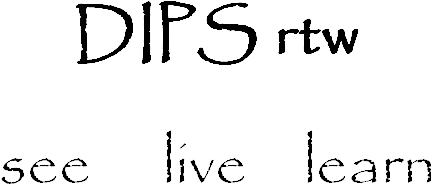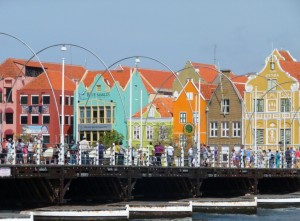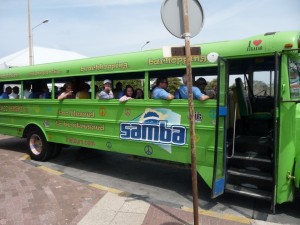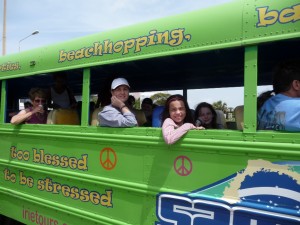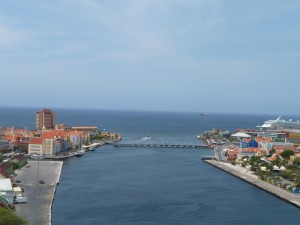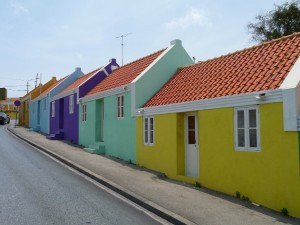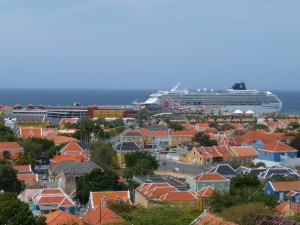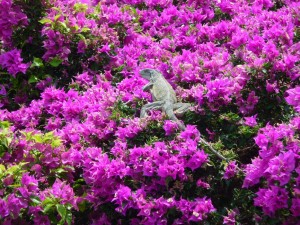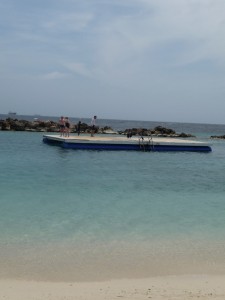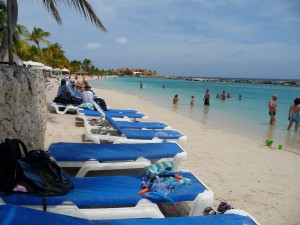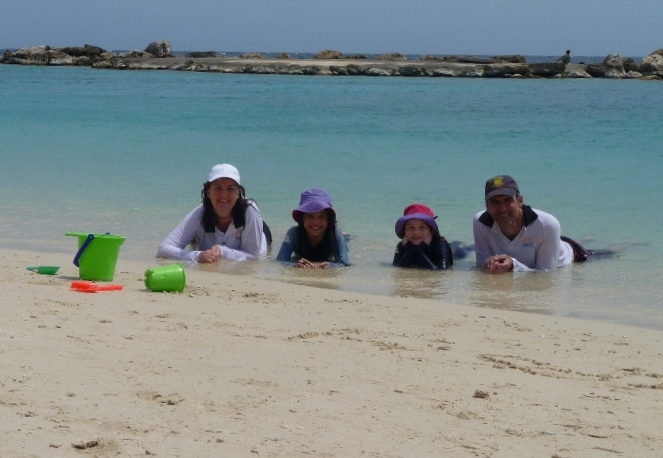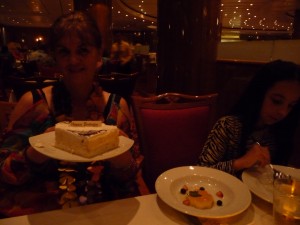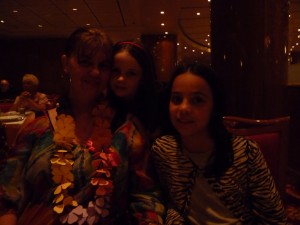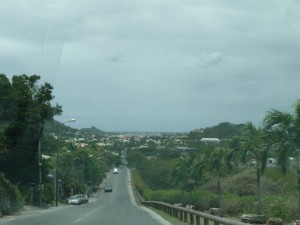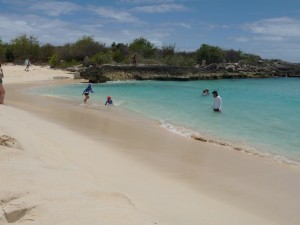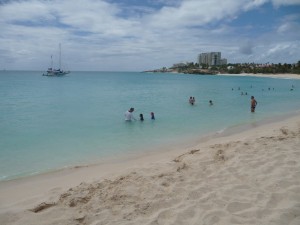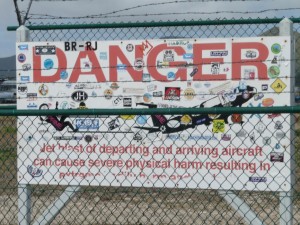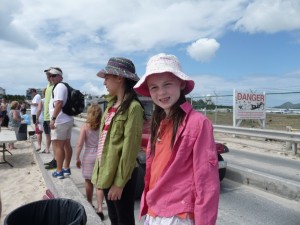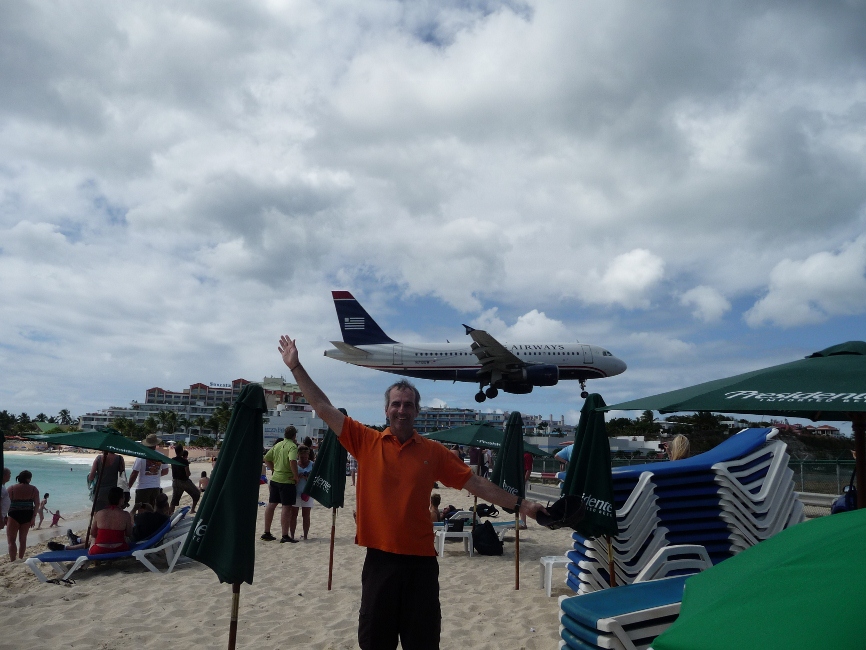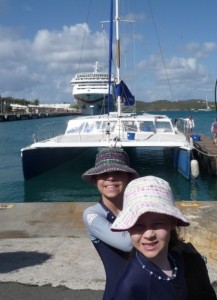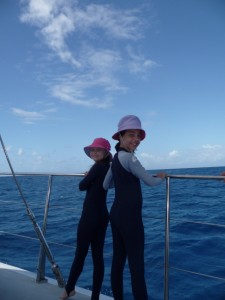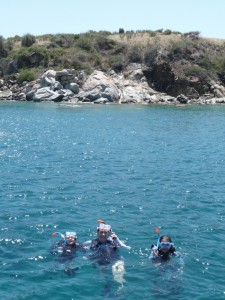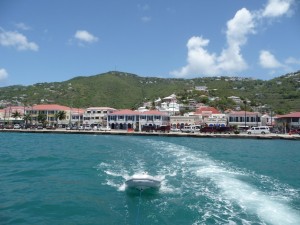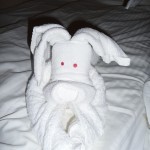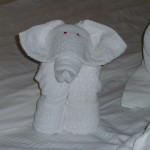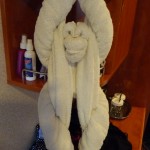‘Too blessed to be stressed’ – DIPS in the Caribbean Part 2
Posted by asuasu69 on Apr 25, 2013 in Aruba, Cruising, St Maarten, St Thomas, USA | 0 comments
Curaçao (as in Blue Curaçao) located just off the Venezuelan coast was where I woke up on my birthday – how lucky am?! After opening a few small gifts and after my breakfast of choice – fresh fruit, scrambled egg and smoked salmon for breakfast we head ashore. Again with no excursion pre-arranged (we prefer to wing it than pay exorbitant shore excursions); we walk off the ship with the snorkelling gear under our arms in the hope of seeing some of the elusive Caribbean coral.
We walk through the main port area and out toward the old city of Willemstad and its beautiful and colourful Dutch architecture when we come across a ‘fun bus’ offering a sightseeing tour around the island including a 2 hour stop at a beach we hoping to get to anyway so we decide to join it. It also offers free beers so being a special occasion we accept the offer!
We listen to the commentary as we go and learn that Curaçao was first mentioned by the Spanish in 1499 who hoped to use the island for agriculture, it is apparently made up of 85% coral and 15% rock. The Spanish quickly renamed it ‘The Useless Island’ and then left. The territory was fought over by several of the world’s great powers for many years before finally being won by the Dutch who turned it into a trading post for slaves captured in West Africa. Interestingly Curaçao has the oldest (still working) floating pontoon swinging bridge built in 1888.
The country of Curaçao is a constituent country of the Kingdom of the Netherlands, and its natural harbour of Willemstad proved to be an ideal spot for trade and commerce, shipping and piracy became Curaçao’s most important economic activities. The Dutch West India Company made Curaçao a centre for the Atlantic slave trade in 1662.
Now its economy is centred around tourism and financial services, shipping, international trade, oil refining and other diverse industry giving it one of the highest standards of living in the Caribbean.
The island’s population comes from a number of ethnic backgrounds. There is an Afro-Caribbean majority of African descent, and also sizeable minorities of Dutch, Latin American, French, South Asian, East Asian, Portuguese and Levantine people. Due to this ethnicity Curaçao is a true polyglot society. The official languages are Dutch, Papiamentu, and English, with Spanish also being popular due to close economic ties with Spanish colonies. The most widely spoken language is Papiamentu, a creole language spoken in all levels of society by over 80% of the population, but it has a very high rate of bilingualism and we are interested to learn that most children can speak and write at least two if not three languages by the time they finish primary school! This, we feel, puts us to shame and we feel quite ignorant especially when we are asked how many languages we speak.
We make a quick stop at a bottling site for Curaçao and enjoy samples of chocolate, coffee and the original blue coloured liquor.
Arriving at Mambo beach we revel in the clear waters and a floating pontoon and also do some snorkelling along the sheltered rock walls but beside fish there is still not much in the way of coral to be seen.
I couldn’t have planned a more enjoyable birthday if I tried – yummy breakfast, fun open air bus ride with free beer, two hours swimming in the clear waters of the Caribbean and to top it off a delicious dinner and two desserts (one was a birthday cake brought out by singing waiters) and not one dish to be washed! As the side of the ‘fun bus’ said – “too blessed to be stressed”. Amen sister.
Next stop on the itinerary was Saint Maarten – playground for Europeans and US citizens.
This is the smallest island owned by two different countries; the French and the Dutch. The French have the northern part of the island with its Marine Parks and includes the highest peak, while the Dutch have the main airport, seaport and cruise ship dock. We hadn’t organised any activities or day trips, but were still determined to give the snorkelling another go, so we wandered off the ship and into the local car hire yard. After some intense negotiating, we took a small sedan for the day (US$65) and headed off.
St Maarten has a lot more elevation with hills and vegetated mountains unlike the flat desert like islands like Aruba and Curaçao. However, like many of the other Caribbean islands, the water is very clear and the white beaches give it a real idyllic feel. We find it a really busy island, and not many areas to actually just pull off the road to check out the beaches. Many little roads off the main road appear to be private or threaten towing if you park there so we keep going, with the girls continually asking how much longer as they had had the promise of another ocean swim.
Nearly two hours later and pretty much the island circumnavigated we pull into a really nice little cove called Mullet Bay Beach with the occasional big wave crashing up onto the beach.
Seeing the jet aircraft just to our right we know we are literally 5 minutes from the infamous Maho Beach. Due to the relatively short runway, aircraft landing at this airport are at a very low altitude when they pass over the beach which is directly in the flight path and just metres from the tarmac. David is excited to be here having seen many a photo of people reaching up to scratch the belly of a landing 737 and is excited to be able to get one for himself, and then we watch as everyone flocks to the fence to be blasted by the jet wash as an aircraft takes off.
Saint Thomas, Virgin Islands
OK, we’d no luck finding good snorkelling spots on our own, so it was time to see the professionals.
St Thomas was the final port of call before arriving back in Miami so we opted for an organised half day sail & snorkel tour which promised diving on a WWII wreck and ‘stunning reef’.
By 8am we were aboard a catamaran headed to Buck Island and we were already oooing and ahhing at the clear emerald coloured water as we sailed along.
The tour stopped in a small bay on the island with a couple of other day trip boats and we all snorkelled for about 30 minutes. The water was certainly clearer than we are used to and there were fish to see including parrot fish, the occasional ‘Dory’ (from Finding Nemo), plenty of the black spikey sea urchins, and yellow coral that ‘grows’ over the rocks and looks like yellow paint that has been poured over the rocks, and another type called fire coral. Though nothing like the vibrant colourful corals we are used to in the Whitsundays.
The ship wreck was clearly visible in 5-6 metres of water, although quite broken up and the girls enjoyed peering down at it wishing it were not in quite as deep water. A very brisk sail back to the dock with a sail-past the front port area with some rum punch for refreshments and we were all done by 12pm. So overall our experience in Caribbean waters – a 9/10 for clarity, temperature and just stunning looks but sadly only a 3/10 for coral.
The girls were keen to spend some more time at the kids club, so the girls and I headed back to the ship while Dave walked into the small downtown area for a look and made use of the wi-fi over a Budweiser at one of the local bars and a purchase of some t-shirts at the local markets before walking back to the ship. The ship cast off and headed out of the bay on sunset. With the girls still at the kids club, we made our way up to the top deck to enjoy the view and were again surprised how clear the water is. Even in the dimming light, we could watch the dark patches of rocks and light areas of sand pass beneath us.
A further fun day at sea and our 11 day cruise had come to an end arriving into Miami at around 6am and after a quick breakfast we say goodbye to our collection of towel animals and head down to await collection by a very dear friend to be taken home to her place in Naples on the west coast of Florida.
